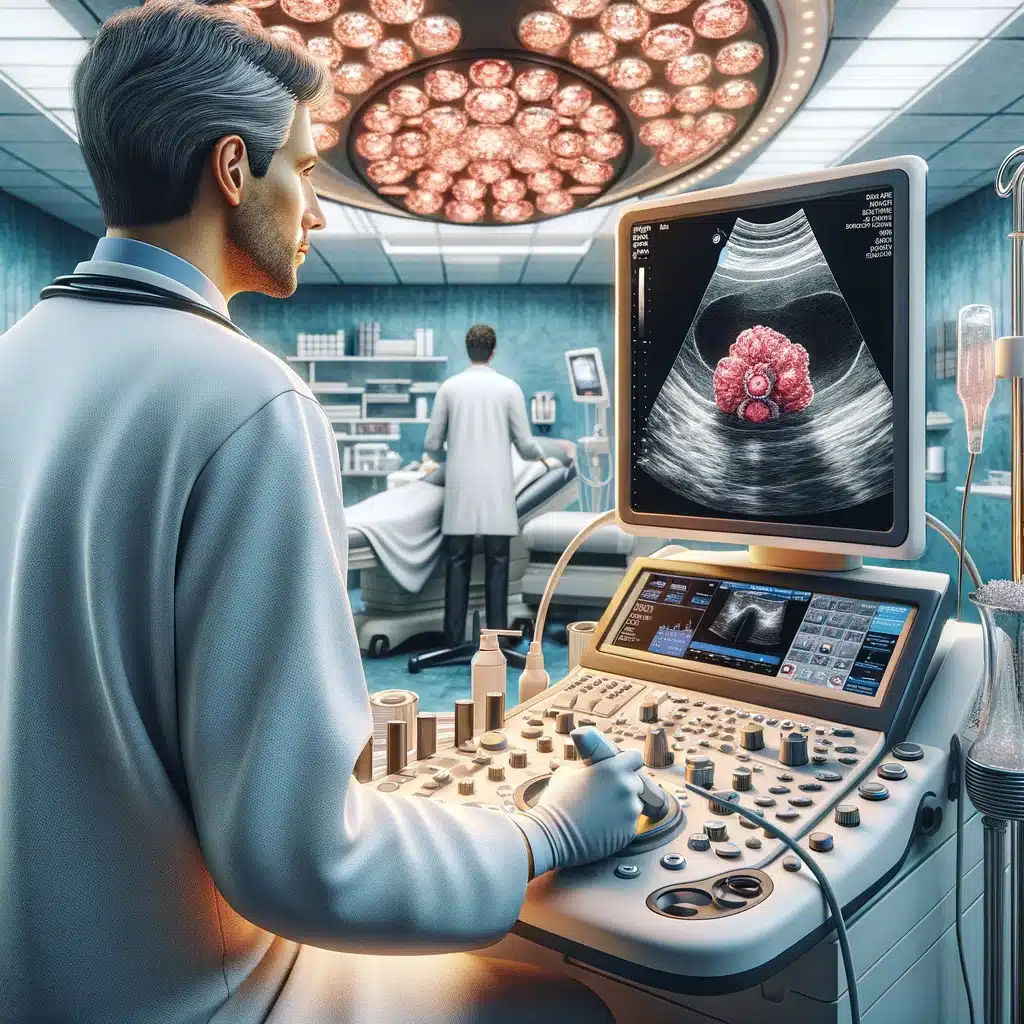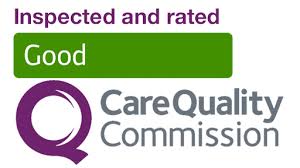Detecting cancer early significantly increases the chances of successful treatment, which is why medical imaging plays a crucial role in diagnosing conditions like abdominal cancer. Among the various imaging techniques available, ultrasound stands out for its unique combination of safety, affordability, and effectiveness. This article aims to shed light on how ultrasound is utilized to identify cancer within the abdomen, offering insights for individuals seeking information on this diagnostic method.
Ultrasound imaging, also known as sonography, uses sound waves to produce images of the structures inside the body. It is a preferred initial diagnostic tool for examining the abdominal area because it does not involve ionizing radiation, making it safer for patients, including pregnant women and children. A study published in the Journal of Clinical Imaging Science highlighted ultrasound's effectiveness in detecting abdominal abnormalities, underscoring its value in clinical settings.
The versatility of ultrasound allows it to explore various organs within the abdomen, such as the liver, kidneys, pancreas, and spleen, to search for signs of cancer. It helps healthcare professionals to assess the size, shape, and consistency of these organs, identifying any irregularities that might suggest the presence of tumors. According to a study in the American Journal of Roentgenology, ultrasound has been instrumental in the early detection of liver cancer, demonstrating its critical role in patient care.
Despite its many advantages, ultrasound's effectiveness can sometimes be limited by factors such as patient body composition and the skill of the operator. Comparisons with other imaging modalities, like computed tomography (CT) scans and magnetic resonance imaging (MRI), in research from the Radiological Society of North America, reveal that ultrasound is a critical first step in diagnosis but may need to be supplemented by these other techniques for a comprehensive assessment.
As technology advances, so do the capabilities of ultrasound imaging. Innovations like 3D ultrasound and contrast-enhanced ultrasound are expanding its diagnostic potential, offering more detailed and accurate views of abdominal structures. Research from the European Journal of Radiology discusses how these advancements could revolutionize the detection and characterization of abdominal cancers, promising a future where ultrasound not only identifies cancer more effectively but also contributes to precise staging and monitoring of treatment response.
Understanding the role of ultrasound in diagnosing abdominal cancer helps patients and their families make informed decisions about their healthcare. It highlights the importance of accessible, non-invasive diagnostic options in the fight against cancer and encourages ongoing research and development in medical imaging technologies.

Understanding Ultrasound Imaging
Ultrasound imaging, also known as sonography, is a widely used diagnostic technique that employs sound waves to produce images of structures within the body. This technology is particularly useful for examining the abdomen, where it can visualize organs such as the liver, kidneys, pancreas, and spleen to check for abnormalities, including cancer.
The process begins when a small device called a transducer emits high-frequency sound waves into the body. As these sound waves bounce off bodily tissues and organs, the transducer picks up the echoes, which a computer then converts into live images displayed on a monitor. These images can reveal valuable information about the organs' size, structure, and any pathological lesions that may indicate the presence of cancer.
One of the key advantages of ultrasound imaging is its safety; it does not use ionizing radiation, making it a preferred method for patients of all ages, including pregnant women. A study published in the Journal of Clinical Imaging Science highlighted ultrasound's role as a first-line imaging technique due to its non-invasiveness, real-time imaging capability, and lack of radiation.
Despite its advantages, ultrasound's effectiveness can be limited by various factors. For instance, the quality of the images may be affected by the patient's body composition or the presence of intestinal gas, which can obscure clear views of abdominal structures. Additionally, the interpretation of ultrasound images requires a high degree of skill and experience, as pointed out in research from the American Journal of Roentgenology. The expertise of the radiologist plays a crucial role in accurately diagnosing conditions from the ultrasound images.
Ultrasound is also valuable for guiding procedures such as biopsies, where precision is critical. According to a study published in Radiology, ultrasound-guided biopsies significantly reduce the risk of complications and improve the accuracy of tissue sampling, demonstrating the technique's versatility and effectiveness in cancer diagnosis and management.
In recent years, advancements in ultrasound technology have expanded its capabilities. Developments like 3D ultrasound and contrast-enhanced ultrasound have improved the ability to detect and characterize abdominal tumors, as research in Ultrasound in Medicine and Biology suggests. These innovations provide clearer, more detailed images, offering deeper insights into the nature of abdominal abnormalities and enhancing the accuracy of diagnoses.
Ultrasound imaging stands as a fundamental tool in the diagnosis and management of abdominal cancer, combining safety, efficiency, and versatility. Its ability to provide immediate visual information makes it an indispensable asset in modern medicine, aiding healthcare professionals in making informed decisions for the care of their patients. As technology continues to advance, the scope and accuracy of ultrasound imaging will only increase, reinforcing its critical role in diagnosing and combating abdominal cancer.
The Role of Ultrasound in Detecting Abdominal Cancer
Ultrasound imaging stands as a fundamental tool in the early detection and diagnosis of abdominal cancer, offering a window into the body's interior without the need for invasive procedures. This technique employs sound waves to create images of the inside of the abdomen, providing valuable information about the size, structure, and potential abnormalities of internal organs.
One of the key benefits of ultrasound is its ability to visualize organ structures in real-time. This dynamic view allows healthcare professionals to observe the liver, pancreas, kidneys, and other abdominal organs for signs of cancerous growths or tumors. A study published in the Journal of Clinical Ultrasound highlights the efficacy of ultrasound in identifying liver abnormalities, underscoring its importance in liver cancer screening programs.
The safety profile of ultrasound is particularly noteworthy, as it does not involve ionizing radiation, making it a preferred choice for pregnant patients and those requiring multiple follow-up scans. Its non-invasiveness also means that patients can avoid the discomfort and risks associated with more invasive diagnostic methods.
Despite its advantages, the effectiveness of ultrasound in cancer detection can be influenced by various factors, including the skill of the operator and the patient's physique. Obstacles such as intestinal gas or obesity can limit the visibility of certain areas, potentially leading to overlooked abnormalities. A comprehensive review in the Radiology journal discusses these limitations and suggests combining ultrasound with other diagnostic tools, like CT scans or MRIs, for a more accurate assessment.
Technological advancements continue to enhance the capabilities of ultrasound imaging. For instance, the introduction of high-resolution probes and contrast-enhanced ultrasound has significantly improved the detection of small tumors and vascular patterns within lesions, as documented in studies appearing in the American Journal of Roentgenology.
The diagnostic journey often begins with ultrasound due to its accessibility and cost-effectiveness. A report from the World Health Organization emphasizes the role of ultrasound in the initial evaluation of abdominal complaints, advocating for its use as a first-line diagnostic tool in resource-limited settings.
Accuracy in diagnosing abdominal cancer via ultrasound varies by organ. Pancreatic cancer, known for its challenging detection in early stages, can be more difficult to visualize with ultrasound. Research in the Pancreatology journal outlines specific ultrasound criteria that can enhance the detection of pancreatic lesions, offering hope for earlier diagnosis and treatment.
Ultrasound also plays a crucial role in guiding biopsies of suspicious areas. The real-time imaging allows for precise needle placement, increasing the likelihood of a successful tissue sample and accurate diagnosis.
As the medical community strives to improve cancer detection rates, the role of ultrasound in the diagnosis of abdominal cancer remains indisputable. Its adaptability, coupled with ongoing technological improvements, ensures its place as a cornerstone in the arsenal against cancer. The continued integration of ultrasound with other diagnostic modalities promises to refine our approach to detecting and treating abdominal cancers, ultimately improving patient outcomes.
Advantages of Ultrasound in Cancer Detection
Ultrasound imaging stands out as a particularly beneficial method for detecting cancer within the abdomen, offering several key advantages that make it an attractive option for both patients and healthcare providers. One of the most notable benefits is its non-invasiveness. Unlike some other diagnostic methods that require incisions or the introduction of instruments into the body, ultrasound procedures are performed externally. This aspect significantly reduces the risk of complications and discomfort for the patient, making it a preferred choice for initial screenings.
Safety is another critical advantage of ultrasound imaging. It does not use ionizing radiation, a concern with modalities like CT scans, which can pose a risk of radiation exposure. This safety profile allows ultrasounds to be used more freely, including in vulnerable populations such as pregnant women, where minimizing radiation is paramount.
Cost-effectiveness also plays a significant role in the favor of ultrasound imaging. Compared to more advanced imaging techniques such as MRI and CT scans, ultrasound is relatively inexpensive. This affordability ensures that more patients can access high-quality diagnostic imaging, which is crucial for early detection and treatment planning. A study published in the Journal of the American Medical Association highlighted the economic benefits of ultrasound, showing it to be a cost-effective tool in the diagnostic process for various conditions, including abdominal cancer.
Ultrasound's real-time imaging capabilities offer another advantage. This feature is particularly useful in procedures like biopsies, where live guidance is needed to accurately target and sample suspect areas. The ability to see the needle's path in real-time significantly improves the precision of these procedures, enhancing their success rate and safety.
Despite its advantages, it's important to recognize that ultrasound imaging does have limitations, such as difficulty imaging through air or bone and a lower resolution compared to some other imaging methods. However, advances in ultrasound technology continue to address these challenges, improving the modality's utility in cancer detection.
Studies have examined the effectiveness of ultrasound in identifying tumors in organs such as the liver, pancreas, and kidneys. According to a study published in Radiology, ultrasound has demonstrated high sensitivity and specificity in detecting liver tumors, underscoring its value in the early detection of liver cancers. Similarly, research in the World Journal of Gastroenterology has shown promising results for ultrasound in diagnosing pancreatic cancer, an area where early detection significantly impacts treatment outcomes.
The combination of safety, cost-effectiveness, non-invasiveness, and real-time imaging makes ultrasound an indispensable tool in the diagnostic arsenal against abdominal cancer. Its ability to provide immediate insights into the presence of tumors or abnormalities greatly aids in the timely and accurate diagnosis, which is critical for effective treatment planning. As ultrasound technology continues to evolve, its role in cancer detection is set to become even more significant, offering hope for better outcomes for patients around the world.

Limitations of Ultrasound in Cancer Detection
Ultrasound imaging has become a fundamental tool in diagnosing various conditions, including abdominal cancers. It offers a non-invasive, readily available, and cost-effective means to visualize the internal structures of the abdomen. Despite its numerous benefits, ultrasound also presents certain limitations in the detection of cancer, which are important for patients and healthcare providers to understand.
One of the primary limitations of ultrasound is its dependency on the skill and experience of the operator. The quality of the ultrasound images and the accuracy of the interpretation can significantly vary depending on the technologist's or radiologist's expertise. This variability can sometimes lead to missed diagnoses or the need for additional testing.
Another challenge is ultrasound's limited ability to penetrate deep tissues, particularly in patients with a higher body mass index. This limitation can hinder the detailed visualization of deep-seated tumors or lesions, potentially leading to underdiagnosis of abdominal cancers in obese patients. Studies have shown that ultrasound may not always provide sufficient detail to distinguish between benign and malignant lesions, especially in the pancreas and other deep abdominal organs.
Ultrasound imaging also faces difficulties in imaging certain areas of the abdomen due to the presence of gas or bone. Organs obscured by the bowel, for example, may not be adequately visualized because ultrasound waves are poorly transmitted through air. This can lead to challenges in diagnosing cancers in parts of the stomach, colon, and other areas adjacent to gas-filled structures.
Comparatively, other imaging modalities like computed tomography (CT) scans and magnetic resonance imaging (MRI) offer better resolution and depth penetration. A study published in the British Journal of Radiology highlights the superior sensitivity of CT and MRI in detecting and characterizing abdominal tumors, suggesting that ultrasound might not always be the most effective standalone diagnostic tool for abdominal cancer.
Despite these limitations, ultrasound remains an essential first step in the diagnostic pathway for many abdominal conditions. Its ability to provide immediate images with no radiation exposure makes it an invaluable tool, especially for initial assessments and guiding certain procedures. For comprehensive diagnosis, however, it is often used in conjunction with other imaging techniques, ensuring a more accurate and detailed examination of the abdominal region.
As technology advances, enhancements in ultrasound equipment and techniques continue to improve its diagnostic capabilities. Contrast-enhanced ultrasound and developments in 3D imaging are promising areas that may address some of the current limitations, offering more detailed and accurate diagnostic information.
Understanding the limitations of ultrasound in cancer detection is crucial for patients and healthcare professionals alike. It ensures informed decision-making and helps set realistic expectations regarding the diagnostic process for abdominal cancers.
Case Studies and Clinical Evidence
Detecting abdominal cancer through ultrasound has been a topic of considerable research and clinical study. The effectiveness of this diagnostic tool varies across different types of cancers and is influenced by factors such as the organ involved, the size of the tumor, and the patient's body composition.
A notable study published in the Journal of Clinical Ultrasound explored the use of ultrasound in diagnosing liver cancer, one of the most common types of abdominal cancer. Researchers found that ultrasound could effectively identify liver tumors by distinguishing between benign and malignant lesions based on their appearance. This study highlights ultrasound's potential as a first-line diagnostic tool, especially in areas where access to more advanced imaging techniques may be limited.
Similarly, the role of ultrasound in diagnosing ovarian cancer was examined in research featured in the American Journal of Roentgenology. The study focused on the morphology of ovarian masses and their appearance on ultrasound scans. It concluded that specific ultrasound features could suggest malignancy, guiding further diagnostic steps and early treatment interventions. These findings underscore the importance of ultrasound in the early detection of ovarian cancer, potentially improving patient outcomes.
Pancreatic cancer presents unique challenges for detection, given the pancreas's deep location in the abdomen. However, a study published in Radiology demonstrated that endoscopic ultrasound (EUS), a specialized form of ultrasound, significantly improves the detection of pancreatic tumors. EUS offers detailed images of the pancreas, enabling the identification of small tumors that might not be visible on traditional ultrasound scans. This advancement in ultrasound technology represents a significant step forward in the early detection and management of pancreatic cancer.
Kidney cancer detection via ultrasound was the focus of a study in the British Journal of Radiology. This research showed that ultrasound is particularly useful in identifying solid renal masses, distinguishing between simple cysts and potentially cancerous lesions. The study emphasized ultrasound's advantage in detecting incidental renal tumors, often before patients exhibit any symptoms.
These case studies and clinical evidence collectively illustrate the critical role of ultrasound in the early detection of abdominal cancers. By providing a non-invasive, accessible, and cost-effective diagnostic option, ultrasound plays a pivotal role in identifying malignancies in the liver, ovaries, pancreas, and kidneys. As technology advances, the precision and utility of ultrasound in cancer diagnosis continue to improve, offering hope for early intervention and better patient outcomes.
Future Directions in Ultrasound Technology
Advancements in ultrasound technology are shaping the future of how we detect and diagnose abdominal cancer, bringing new levels of precision and accessibility to this critical area of medicine. As we look ahead, several emerging technologies and research directions promise to enhance the effectiveness of ultrasound in identifying cancer within the abdominal cavity.
One of the most exciting developments is the advent of 3D ultrasound imaging. This technology offers a more comprehensive view of abdominal organs than traditional 2D ultrasound, allowing for better visualization of tumors and their relationship to surrounding tissues. A study published in the Journal of Ultrasound in Medicine highlights the increased accuracy of 3D ultrasound in evaluating liver lesions, suggesting its potential to significantly improve diagnostic processes for liver cancer.
Another promising area is the use of contrast-enhanced ultrasound (CEUS). CEUS involves the injection of microbubble contrast agents that enhance the ultrasound images, providing clearer pictures of blood flow in and around tumors. This technique has shown great promise in distinguishing between benign and malignant liver lesions, as noted in research published in the World Journal of Gastroenterology. The precision of CEUS could dramatically improve early detection rates of abdominal cancers, offering patients a better prognosis.
Additionally, the integration of artificial intelligence (AI) with ultrasound technology is a development that cannot be overlooked. AI algorithms are being trained to interpret ultrasound images with a level of accuracy that rivals human experts. A study conducted by researchers at Stanford University, detailed in the Radiology journal, demonstrated how AI could assist in identifying and classifying liver tumors on ultrasound scans. This innovation has the potential to streamline diagnostic workflows and reduce the variability associated with human interpretation.
Portable ultrasound devices represent another frontier in the democratization of imaging technology. These devices make ultrasound diagnostics more accessible in remote or underserved areas, expanding the reach of early cancer detection efforts. The impact of portable ultrasound was illustrated in a project conducted in rural regions, as reported in the American Journal of Roentgenology, showing how such technology can bridge gaps in healthcare delivery.
As ultrasound technology continues to evolve, it holds the promise of not only enhancing the accuracy of abdominal cancer diagnoses but also of making these life-saving diagnostics available to a broader population. Research and development in this field are driven by the goal of providing clinicians with better tools to fight cancer and patients with hope for a healthier future. The ongoing refinement of ultrasound technology, paired with cutting-edge research, underscores the potential to transform the landscape of cancer diagnosis and treatment.
Ultrasound imaging stands as a key player in the early detection and diagnosis of abdominal cancer, offering a unique combination of safety, accessibility, and effectiveness. With its ability to provide real-time images, ultrasound aids healthcare professionals in identifying and evaluating tumors within the abdominal cavity. This imaging technique is particularly useful for examining organs such as the liver, kidneys, pancreas, and spleen, where its non-invasiveness and lack of ionizing radiation present a minimal risk to patients.
The advantages of ultrasound are well documented, as highlighted by its widespread use in clinical settings across the globe. Its cost-effectiveness and convenience make it an attractive first-line diagnostic tool, especially in situations where quick decision-making is crucial. A study published in the Journal of Clinical Imaging Science underscored the ultrasound's pivotal role in detecting liver cancer, showcasing its capacity to reveal abnormal growths with a high degree of accuracy.
However, the efficacy of ultrasound is not without its limitations. The technology's dependence on the skill of the operator and its reduced effectiveness in patients with certain body types underscore the need for complementary diagnostic methods, such as CT scans or MRI, in comprehensive cancer detection strategies. Despite these challenges, advancements in ultrasound technology, including the development of 3D imaging and contrast-enhanced ultrasound, promise to enhance its diagnostic capabilities further.
Clinical evidence supports the ongoing importance of ultrasound in the medical field. A comprehensive review in the American Journal of Roentgenology compares various imaging modalities and consistently ranks ultrasound as a critical tool for initial cancer screening. This is complemented by ongoing research aimed at refining ultrasound technology to improve its sensitivity and specificity in cancer detection.
For individuals seeking information on abdominal cancer diagnosis, understanding the role of ultrasound is essential. It offers a non-invasive, cost-effective method that plays a crucial role in the early detection of cancer, significantly impacting treatment outcomes. As technology advances and clinical expertise evolves, ultrasound is likely to continue being a cornerstone in the fight against abdominal cancer, providing patients and doctors with valuable diagnostic insights.







